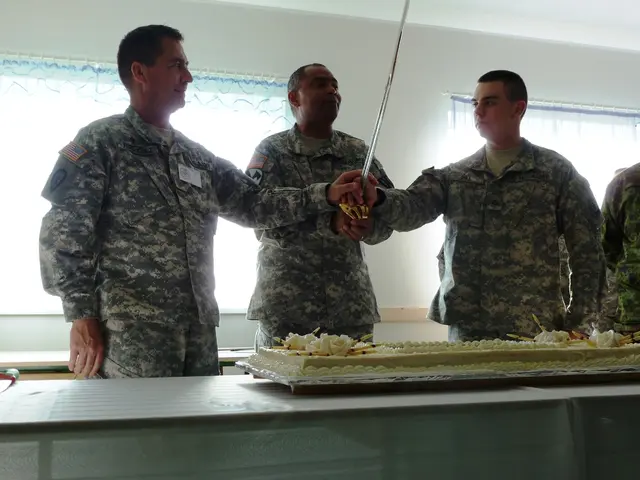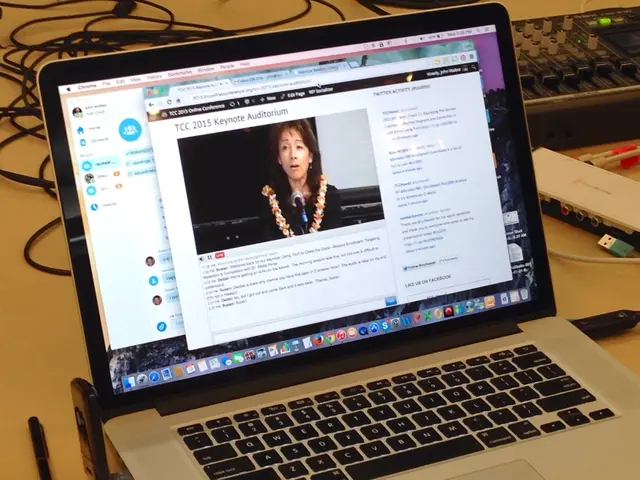Elevated concerns about air travel appear to be on the rise. Learn strategies to manage flight-related anxiety.
Flying these days can spark a catalog of worries, from the recent mishaps to the mere thought of being locked in a metal tube hurtling through the sky. That's where Adelynn Campbell finds herself, having developed an air travel-induced anxiety after a panic attack on her last flight.
Remember Mel Brooks's quip about the winged mode of transportation? Well, he wasn't far off. Air travel anxiety, sometimes called aerophobia, isn't just being apprehensive about a flight – it's intense anxiety, rooted in specific elements of air travel. Self-professed aerophobes often feel most uneasy during take-off and landing or when they contemplate being contained in a plane cabin.
Research suggests that 25 million U.S. adults experience aerophobia, with symptoms often emerging during adulthood, especially in folks with new life changes or responsibilities. Sometimes, it's not the fear of crashing that's the issue; it's the claustrophobic feelings of being trapped and losing control. For Adelynn, the anxiety centers around her feeling trapped and breastless.
The good news is that you can find ways to cope with that knot in your stomach when you think about stepping onto a plane. Here are some strategies that can help ease your fears:
Deep Breathing Exercises
Taking deep, deliberate breaths can help calm your body during anxious moments. Box breathing (inhale for four seconds, hold for four, exhale for four, hold again for four) or 4-7-8 breathing (inhale for four seconds, hold for seven, exhale for eight) can help you gain control in high-stress situations[2].
Grounding Techniques
Grounding techniques help by centering your focus on the present moment rather than on feared thoughts. The 5-4-3-2-1 grounding technique is one example, asking you to name five things you see, four you touch, three you hear, two you smell, and one you taste. Physical items like textured stones or sour candies can serve as tactile or taste anchors to help distract you from anxious thoughts[2][4].
Exposure Therapy
For more severe anxiety, exposure therapy can help reduce fear. This might start by having patients get comfortable looking at pictures of planes, watching videos of planes flying safely, or using virtual reality headsets to simulate flights[1]. Familiarity through exposure reduces the unknowns that trigger fear[5].
Creating a Calming In-Flight Routine
Develop a routine to help keep yourself relaxed during flights. Meditation, calming music, or focused breathing techniques can make a difference[1][4]. Flight attendants have been known to offer reassurance and a calming presence during anxiety episodes for some passengers[1][4].
While these techniques can help manage mild-to-moderate aerophobia, individuals with more severe symptoms may require medication or psychiatric treatment. Remember, it's always a good idea to consult a healthcare professional for advice tailored to your specific situation.
Staying informed about aviation safety can also help reassure you. Apps like SOAR and SkyGuru provide real-time explanations of flight events, making the flying experience seem less unpredictable and frightening[4].
By incorporating these tips into your flying routine, you can take flight with a little less trepidation.
- Adelynn Campbell, having developed aerophobia after a panic attack on her last flight, is just one of the 25 million U.S. adults who experience air travel-induced anxiety.
- The fear of crashing isn't always the issue for self-professed aerophobes; often, it's the claustrophobic feelings of being trapped and losing control that provoke anxiety.
- In the realm of health-and-wellness, mental-health, fitness-and-exercise, and science, there are strategies to help cope with aerophobia, such as deep breathing exercises, grounding techniques, exposure therapy, and creating a calming in-flight routine.
- Deep breathing exercises like box breathing or 4-7-8 breathing can help gain control in high-stress situations, providing reassurance during anxious moments.
- Grounding techniques, such as the 5-4-3-2-1 method or using physical items like textured stones or sour candies, can help center your focus on the present moment and distract from anxious thoughts.
- For those with more severe anxiety, exposure therapy might be beneficial, helping reduce fear by gradually exposing individuals to the feared objects or situations, like planes or flight-related events.
- By following these tips, individuals can ensure a less fearful and more manageable flying experience, making use of tools like apps like SOAR and SkyGuru to stay informed about aviation safety and events.





